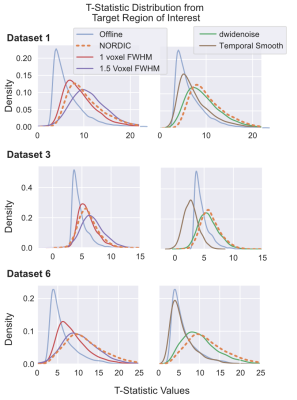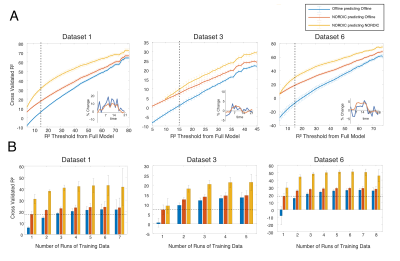Logan T. Dowdle1, Luca Vizioli2,3, Steen Moeller2, Cheryl Olman4, Geoffrey Ghose1,2,4, Essa Yacoub2, and Kamil Ugurbil1,2,5
1Neurosciences, Center for Magnetic Resonance Research, Minneapolis, MN, United States, 2Radiology, Center for Magnetic Resonance Research, Minneapolis, MN, United States, 3Neurosurgery, University of Minnesota, Minneapolis, MN, United States, 4Psychology, University of Minnesota, Minneapolis, MN, United States, 5Medicine, Center for Magnetic Resonance Research, Minneapolis, MN, United States
1Neurosciences, Center for Magnetic Resonance Research, Minneapolis, MN, United States, 2Radiology, Center for Magnetic Resonance Research, Minneapolis, MN, United States, 3Neurosurgery, University of Minnesota, Minneapolis, MN, United States, 4Psychology, University of Minnesota, Minneapolis, MN, United States, 5Medicine, Center for Magnetic Resonance Research, Minneapolis, MN, United States
The NORDIC method dramatically increases gradient echo BOLD signal to noise ratio, with negligible smoothing. Improvements are validated by better predictions of held-out data; one run of NORDIC data is equivalent to 2 or 3 runs of conventional data.

Figure 1. Distributions of T-values. T-values were extracted from the Target ROI (Center > Surround or Faces > Scrambled) derived from Offline data. The t-values obtained with NORDIC (Orange, dashed) processed data is comparable to the effects of an additional 1 or 1.5 voxels FWHM gaussian smoothing. While temporal smoothing did increase T-statistics for Dataset 1, for the fast event-related design (Dataset 3) this led positive and negative t-values, an effect not found in NORDIC data.

Figure 4. NORDIC leads to higher cross-validation performance. A) Exhaustive cross validation performance when training on using only one run. R2 is shown over voxel inclusion threshold from full model. Examples of single voxel, single run FIR model estimates are shown. B) K-Fold training was repeated with more runs. R2 performance (higher is better) within mask of voxels that explained 15% of variance, for increasing number of training datasets. Error bars are standard error over permutations.